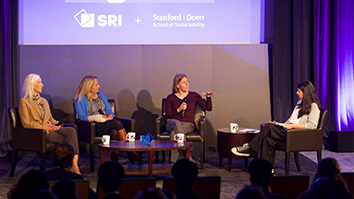Citation
Michalchik, V., Schaeffer, E., Tovar, L., Steinbeck, R., Bhargava, T., Kerns, C., Engel, C., Levtov, R. 2001, April. Small group collaboration in the large lecture setting: Collaborative process, pedagogical paradigms, and institutional constraints. Paper presented at the annual meeting of the American Educational Research Association, Seattle, WA.
Abstract
This paper focuses on some of the key issues involved in implementing a collaborative design project in the setting of the large undergraduate lecture course at a major research university, offering a preliminary allow analysis of the assignment mainly as a function of how students managed and interpreted it. The collaborative design project was assigned to students in the human biology core course at Stanford university in 1999. At staggered points throughout the quarter, 24 groups of approximately 10 students each were asked to produce informative websites on assigned topics. A number of approaches, including videotaping cooperative sessions, focus groups, and student student surveys, were used to study group interactions for two of these groups. Findings show that each of the two groups experienced different types of successes and difficulties. One group engaged more deeply with the course content and developed an egalitarian and supportive participatory structure for its members. This group demonstrated greater learning and greater success at collaborating than the members of the other group. The other group managed its problems of project and resource management largely by working in sub groups and treating a fairly simple project in the most straightforward manner possible. The group members did not necessarily learn a great deal about their topic overall, but they produced a superior final product as assessed for a course grade. These findings draw attention to the different are strands of the group process that are entailed in collaborative design. They point to the need for adequate scaffolding along each of several lines to avoid problems.


